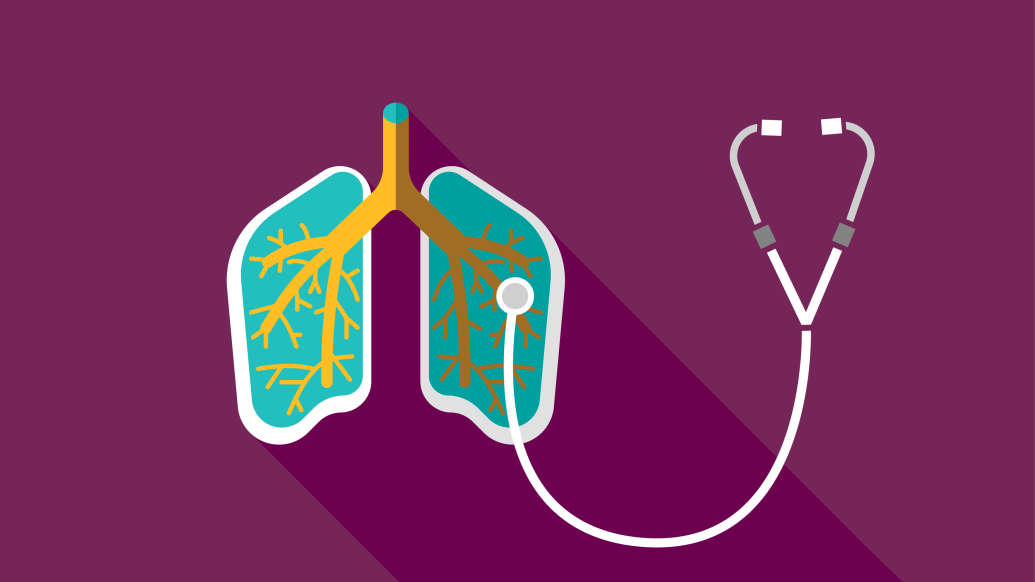It’s the third-leading cause of death in the United States, but compared to other chronic diseases, COPD research funding is low and patients’ access to care is poor.
11:20 PM
Author |

Fifteen million: That's the number of adults in the United States affected by chronic obstructive pulmonary disease, or COPD.
In fact, it's the third-leading cause of death in the U.S., according to the Centers for Disease Control and Prevention.
But for a disease so high on the mortality-cause list, patients might not be receiving adequate treatment.
Meilan Han, M.D., an associate professor of internal medicine at the University of Michigan and the medical director of the U-M Women's Respiratory Health Program, is the lead author on a new report that set out to explore this idea and provide a comprehensive view of COPD care in the U.S.
"We found there are huge problems in access to and standards for care for some of society's most vulnerable patients," Han says.
COPD causes breathing-related problems and blockage of airflow in the body. Symptoms of the disease include shortness of breath, coughing, difficulty exercising and history of asthma. It's diagnosed using spirometry, a breathing test that checks how well your lungs can inhale and exhale.
The report, commissioned by The Lancet Respiratory Medicine, was presented at the American Thoracic Society International Conference in San Francisco, California.
In the report, Han and her 27 fellow leaders in respiratory medicine highlight seven areas of focus within COPD care and key findings for each:
-
Present state of COPD care: COPD affects more individuals with low socio-economic status, and patient access to education, medications and non-medication interventions needs to improve. Also, there is a lack of sufficient training around the disease for medical providers, particularly primary care providers.
-
The economic perspective: Out-of-pocket costs for patients, particularly for drugs and those affected by multiple chronic diseases, are a large burden. They result in patients having increased overall health care costs and reduced adherence. Patients may face copayments of $75 or more per drug, and may decide to alter the way they take their medication (not taking full dosages, skipping a day, for example) to save costs.
-
COPD research and development: While developing drugs for the disease, drugmakers and the pharmaceutical industry will need to consider cost-effectiveness for health care payers and patients. More funding for research and new drugs that would slow or halt disease progression are needed for COPD compared to other diseases with high mortality rates.
-
COPD-specific care: Data for COPD self-management programs (such as oxygen therapy) in the clinical setting is scarce, which means insurance coverage for these programs is, too. It's important to work toward improved methods of gathering data on these programs. In addition, telemedicine and palliative care have the potential to reduce several clinic visits for patients, but more research is needed.
-
Coordination of care: Although penalties for readmissions of COPD patients have been implemented, it's not clear if readmissions among the patient group can be prevented. Coordination of care among clinicians and institutions remains a challenge, but changes in reimbursement structures might help to put a greater focus on care coordination, especially if reimbursement was linked to provider performance and outcomes.
-
Assessment of cost-effectiveness and quality: There have been very few cost-effectiveness analyses of non-medication interventions, but some evidence suggests some of these interventions could be cost-effective options. Quality measures for COPD need to be developed to promote evidence-based, high-quality care. Poor standards of care are evident when only one in three hospital admissions offered COPD patients the standard recommended treatments. The quality of care for COPD is lagging compared to other complex chronic diseases and will require a multidisciplinary effort to improve.
-
Future directions: Health systems need to be able to detect at-risk patients at every entry point into their system and embrace innovation. Patients and their caregivers should be engaged in their care plan. Truly integrated care for patients will allow them to transition smoothly and seamlessly through their treatment journey.
Han says this report required her to step outside of her normal research realm and instead found herself reviewing previously published research and conducting interviews with stakeholders. But she knew it could end up providing her fellow colleagues with much-needed information on COPD.
"This report is just the beginning of a larger conversation about COPD care," Han says. "More research is needed to help us further understand the disease and bring our patients the best treatments possible."

Explore a variety of healthcare news & stories by visiting the Health Lab home page for more articles.

Department of Communication at Michigan Medicine
Want top health & research news weekly? Sign up for Health Lab’s newsletters today!





